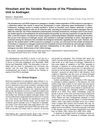Human Skin Is a Steroidogenic Tissue: Steroidogenic Enzymes and Cofactors Are Expressed in Epidermis, Normal Sebocytes, and an Immortalized Sebocyte Cell Line (SEB-1)
May 2003
in “
Journal of Investigative Dermatology
”
TLDR Human skin can produce steroids from cholesterol.
The study demonstrated that human skin, particularly sebaceous glands and an immortalized sebocyte cell line (SEB-1), expressed steroidogenic enzymes and cofactors, indicating that skin could function as a steroidogenic tissue capable of synthesizing steroids from cholesterol. Methods such as immunohistochemistry, Western blotting, and radioimmunoassay confirmed the presence and activity of enzymes like P450scc and P450c17. SEB-1 cells maintained a sebaceous phenotype and showed the ability to convert cholesterol derivatives, suggesting that local enzyme inhibition could be a potential therapeutic approach for androgen-mediated skin conditions like acne and androgenetic alopecia. However, the clinical significance of this pathway in such conditions remained to be established.







